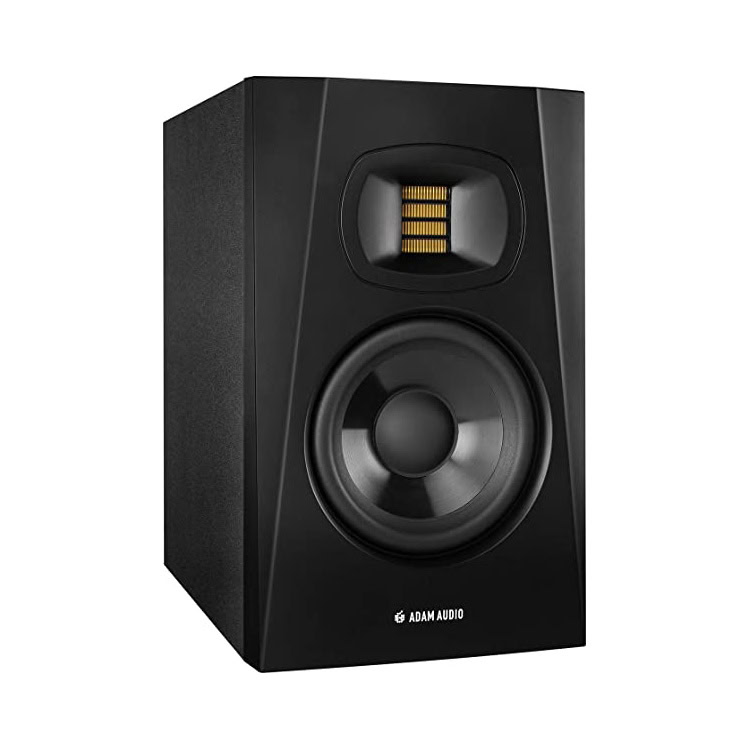Affiliate links on Android Authority may earn us a commission. Learn more.
Studio monitors — they are not for everyone
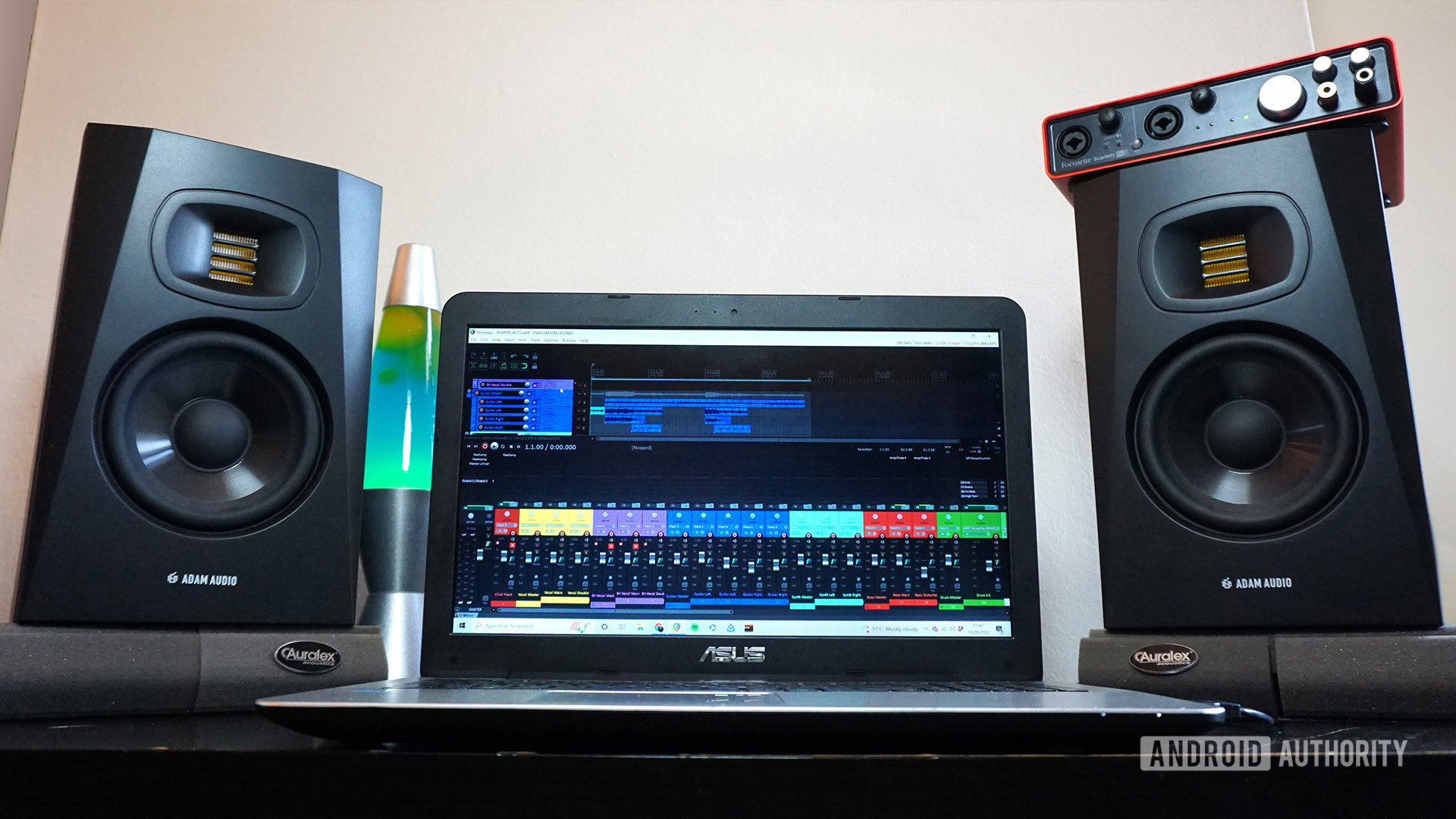
Our increasingly fast-paced lifestyles have made headphones and earbuds the go-to option for music listening. Those looking to blast their favorite party anthems on weekends have also fully embraced Bluetooth speakers, such as the Anker Soundcore Motion Plus. Smart home-connected speakers are also popular options, but not so much for musos looking for a cut above the rest regarding sound quality. There remains an unquenchable desire among audiophiles for the best quality sound systems capable of reproducing high-res audio files. With big brands such as Sony, Yamaha, M-Audio, KRK Systems, and JBL all making high-quality studio monitors, there is a head-scratching amount of choice around.
While great on the go, Bluetooth speakers often sacrifice quality for connectivity. Keen music fans and recording artists crave sound systems that can deliver distortionless power and broad audio clarity (so, nothing too sophisticated like smart speaker multi-room systems.) This narrows the available choices to bookshelf speakers or studio monitors — the type used for professional audio recording.
Music producer or music fan?
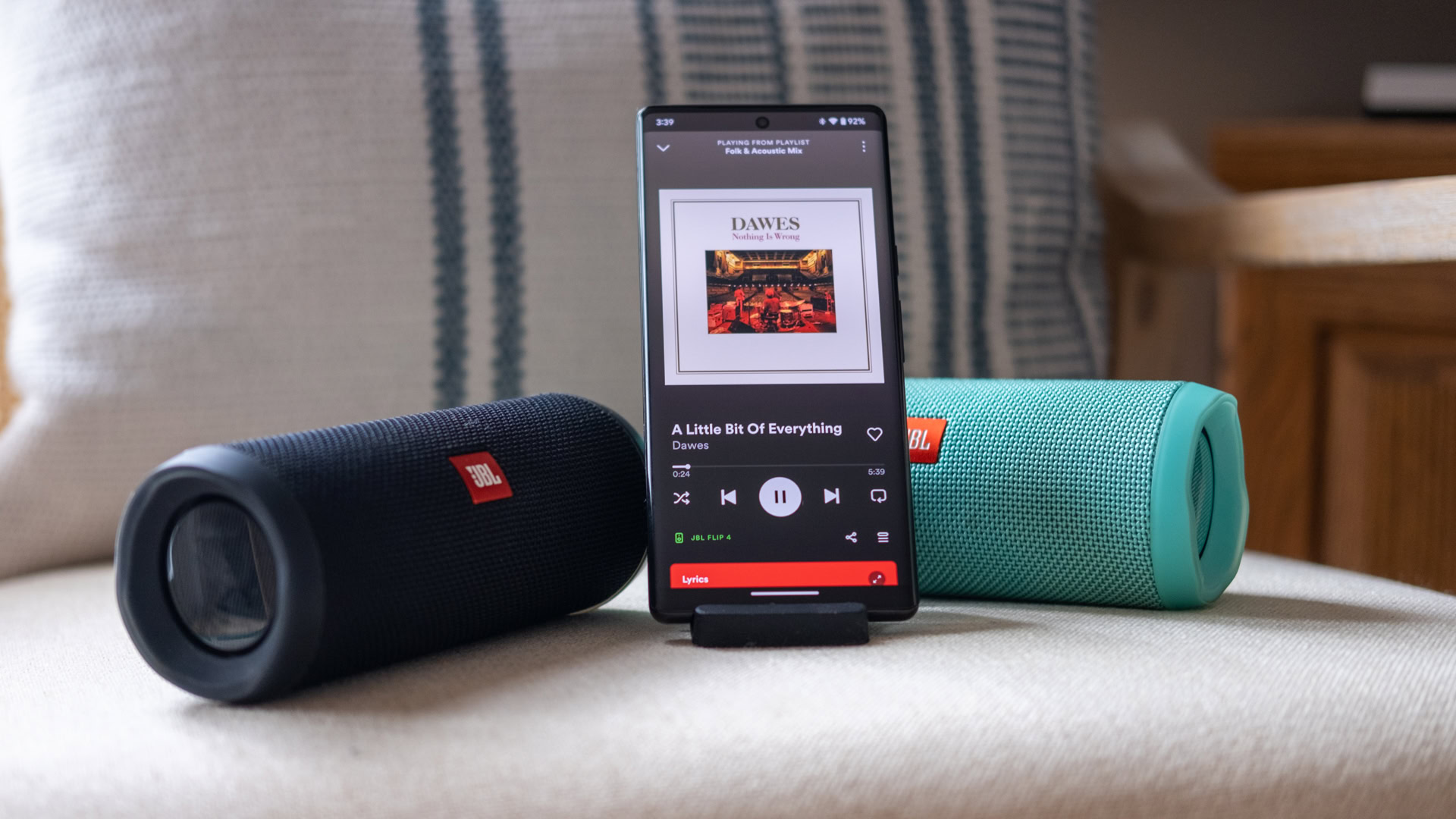
There will always be talk about the best reasons for buying studio monitors. The simple answer is that if you want easy connectivity, built-in EQ enhancement, or smart features, then you are probably better off buying a set of Bluetooth speakers, bookshelf speakers, or a smart speaker system. However, if you are an audiophile, you are likely buying studio monitors to reproduce an accurate representation of the music that you put through them. Known as a flat frequency response, this refers to hearing the music as close to how the artist recorded it as possible.
Studio monitors can be used in near-field environments to achieve this, such as in small rooms or mounted on stands near a desk 2-3 feet away. Some studio monitors can also be used in far-field environments — up to 10 feet away — depending on the size and type of drivers they have. Active studio monitors are the most common, housing built-in amplifiers that require an independent power supply. On the other hand, passive studio monitors need an external amplifier to power them. You may find crossover controls housed on studio monitors, which split the audio signal into high and low frequencies to avoid mixing frequencies and distortion.
Getting the most out of your music does not necessarily mean you need to purchase studio monitors.
This differs somewhat from the bookshelf and Bluetooth speakers, which usually house a built-in EQ to boost lower frequencies, have very few in-built audio customization controls, and are robust and portable enough for most everyday listening needs. For example, bookshelf speakers are great when working with a static amplifier, while Bluetooth speakers can be taken around to garden parties to blast summer anthems from Spotify.
I have enjoyed using the Adam Audio T5V studio monitors for some time now. Although they are considered budget monitor speakers compared to others on the market, they reproduce bass frequencies clearly with plentiful volume while avoiding any noticeable distortion. They are a little bright out of the box, but this can be fixed easily with a high-shelf filter. While I would recommend these studio monitors to any muso working with a comparatively tight budget, studio monitors are not for everyone.
Studio monitors are less user-friendly than “everyday” speaker systems
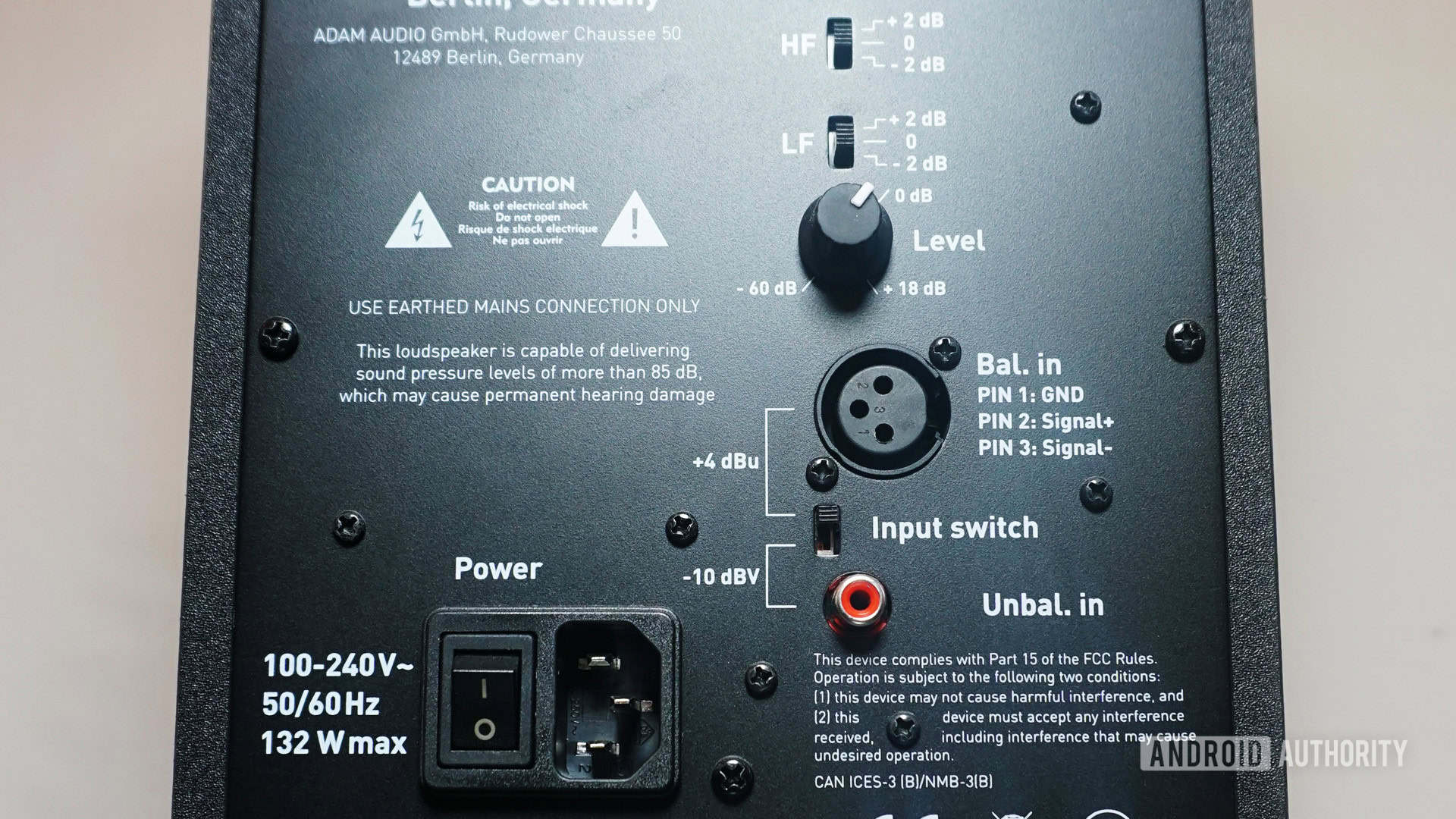
Compared to Bluetooth speakers, smart-home systems, and bookshelf speakers, studio monitors require a little more finesse to get them to sound right. At the time of purchase, my Adam Audio T5V speakers cost roughly $350 — a semi-affordable introduction to high-quality audio. But before sprinting off the starting line, there are several considerations to take to hook studio monitors up.
While you can purchase Bluetooth studio monitors, there is an argument to be made about whether this somewhat defeats the point of purchasing high-quality speakers in the first place. That is because even the best-quality Bluetooth codecs, such as aptX HD, have a peak bit-rate of 576 kbps, 48kHz sampling, and up to 24-bit sample resolutions. While that is considered high quality for Bluetooth, even the most popular Bluetooth studio monitors, such as the PreSonus Eris 3.5 BT, mainly connect via the SBC Bluetooth codec. That means most Bluetooth studio monitors support a peak bit rate of 320kbps, 44.1kHz sampling, and up to 16-bit sample resolutions in perfect conditions. SBC also has a notoriously unreliable signal strength, which is poor for listening to music with a critical ear.
This compares to wired connectivity, such as the unbalanced RCA and balanced XLR inputs on the T5V, that are capable of consistently reproducing CD-quality audio at 24-bits. Over short distances, such as 2-3 feet, unbalanced cables won’t pick up any noticeable interference. However, if your studio monitors are placed in a way that requires longer cabling, then using balanced inputs will help to keep any pesky electrical noise at bay. Unfortunately, regular jack cables do not support noise-suppressing balanced inputs, which means if you plan to use a 3.5mm to dual RCA cable over a long distance, you may pick up interference.
Power supplies, interfaces, connector cables, and external amplifiers make studio monitors less user-friendly.
Some commentators will note that DACs are another way to connect your studio monitors to your chosen device, whether via a computer, phone, or Bluetooth. Fiio makes some handy devices, such as the E10K Olympus 2 for wired connectivity and the BTA30 Pro for wireless connections (including aptX HD.) However, the additional cost of buying a DAC may be a turn-off compared to a pair of speakers with an in-built amplifier.
If you plan on recording audio, then soundcards and interfaces are probably more up your street. These can cost anywhere between ~$60 and $5,000+ depending on the brand and how many inputs and outputs they have. However, you do not have to spend much money to record music. For example, the Focusrite Scarlett 6i6 launched for roughly $150 and boasts four balanced TRS line outputs, two independent headphone outputs, a stereo S/PDIF output, and a MIDI output. That gives users lots of options to connect to their chosen speakers.
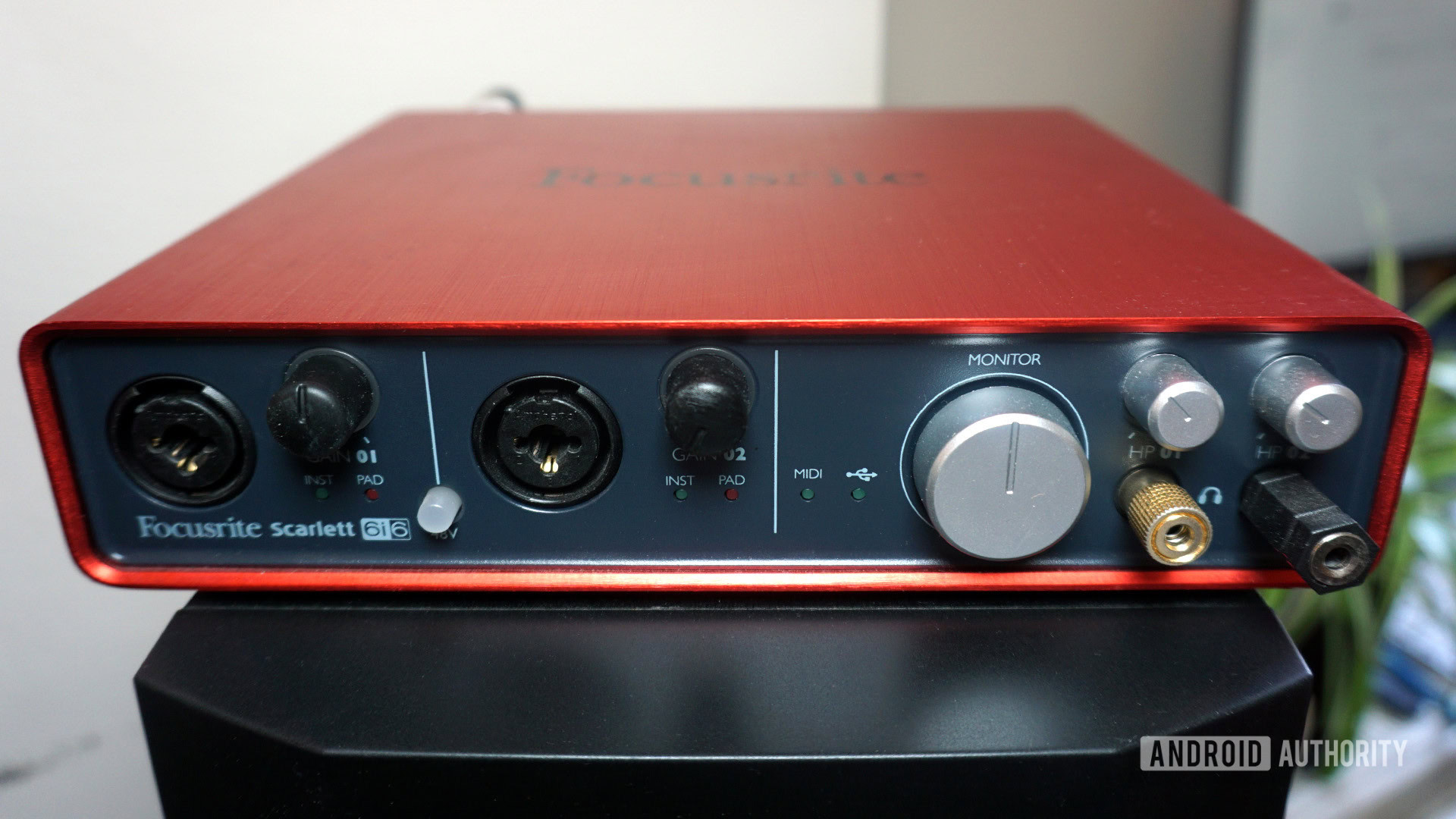
The T5V has a surprisingly flat and wide frequency response for the price, thanks to their five-inch bass woofers and Adam Audio’s innovative 1.9-inch accelerated ribbon U-ART tweeters. Even though virtually all studio monitors have waveguides to integrate the bass woofer and tweeter drivers, the T5Vs HPS waveguides have a very even and uniform consistency. This is especially prominent in the broad horizontal and tight vertical planes, which minimizes potentially distracting reflections. They also benefit from a large, well-controlled sweet spot even at high output levels.
Like other studio monitors on the market, the T5V hosts some pretty tasty EQ controls on the back panel. These help to adjust the high and low shelf EQs by -2dB, 0dB, and +2dB, respectively. This is especially useful for the T5Vs, given that the high-frequency range sounds prominent on the 0dB setting. However, placement, size, shape, and furniture inside a room also influence what you hear from monitor speakers. For example, I use my T5Vs in a room that is not larger than 2.5m x 2.5m filled with paintings, furniture, and cushions. I also sit 2-3 feet from my monitors, positioned at roughly 45-degree angles to my ears.
Adam Audio's T5V delivers distortionless bass and flat frequency response on a medium budget.
The T5V are also compact, measuring 11.7 x 7 x 11.7 inches. This is useful for placing the speakers in a small workplace. The T5V also have a wide listening sweet spot, which works well for creating content in an optimized listening space. If I had one criticism of the T5Vs, it is that the LEDs to indicate that the monitors are “on” are located on the back panels, which seems a little pointless. However, I would happily recommend the T5Vs to anyone looking to hone their creative craft on a medium-sized budget. For use as a set of regular music speakers, however, most people will be better off investing in a pair of bookshelf speakers.
Studio monitors for music, are they worth it?
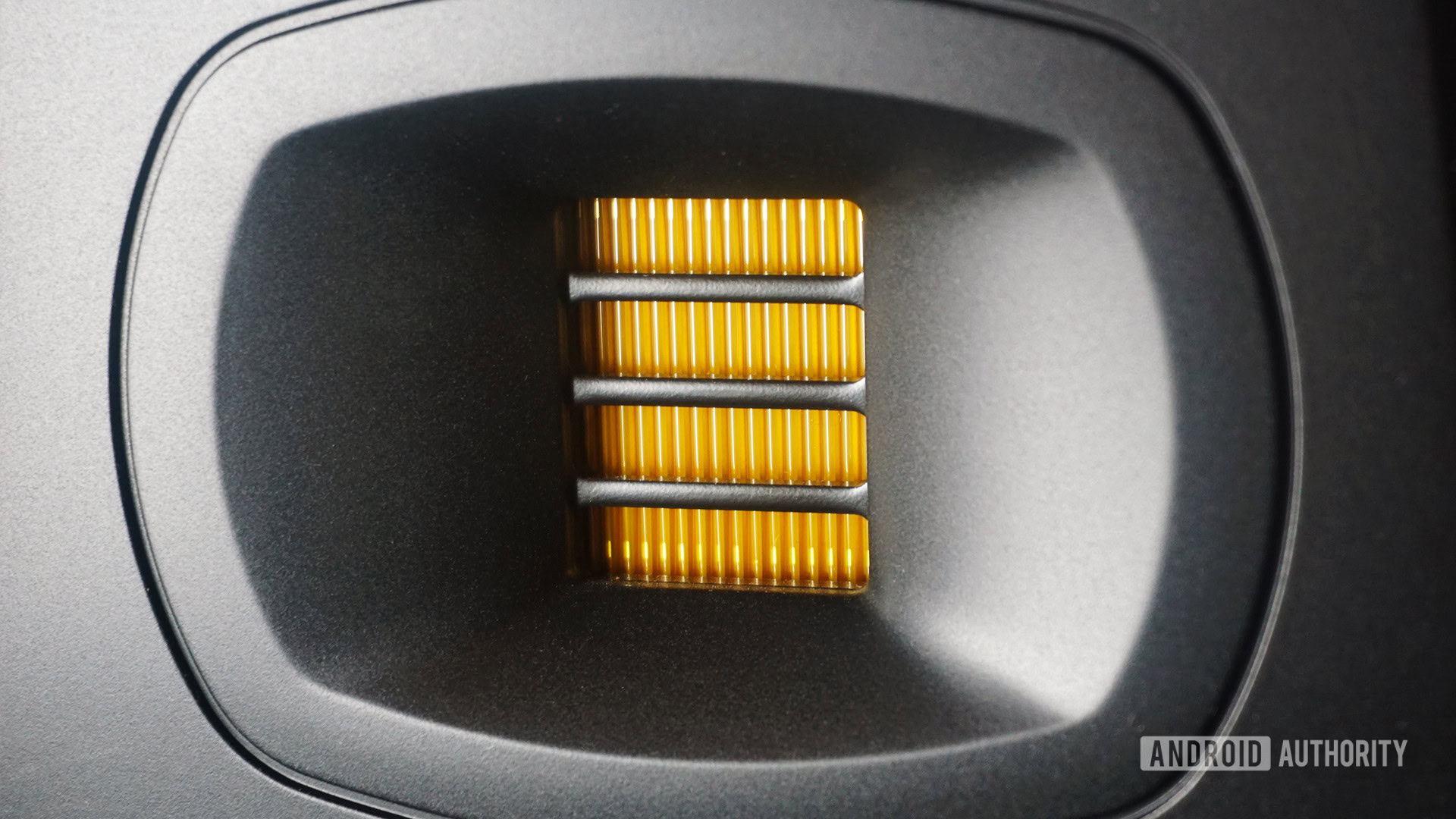
Audio consumerism is as subjective as it is contentious. While most people are switching to Bluetooth headphones and earbuds, many argue that wired listening remains superior. Truthfully, it comes down to a personal choice between quality and convenience.
Do not get me wrong — listening to my favorite songs on the T5Vs sounds amazing (provided I am sat in the sweet spot.) They also look great and are easy to use once they are set up. Having an in-built EQ for each monitor is also really helpful, and they are pretty compact compared to other studio monitors on the market. That said, they weigh 5.7kg and do not have any Bluetooth connectivity options built in. Like most studio monitors, the best way to connect them is with a sound card, DAC, or audio interface. Most interfaces use Thunderbolt, FireWire, or USB to connect to a recording device. While you could connect devices such as smartphones and MP3 players via the unbalanced RCA port, this is not the best setup for critical listening.
Without in-built Bluetooth connectivity, studio monitors require 3.5mm to dual-RCA cables to connect to smartphones and MP3 players.
Still, if you are new to high-quality audio, have the required space, and want to experience unaltered music, a pair of studio monitors may be for you. On the other hand, if you value convenience over a flat-frequency response, or do not want to splash out on top-of-the-range equipment, then there are likely more appropriate speaker systems out there for you.
They are certainly not for everybody
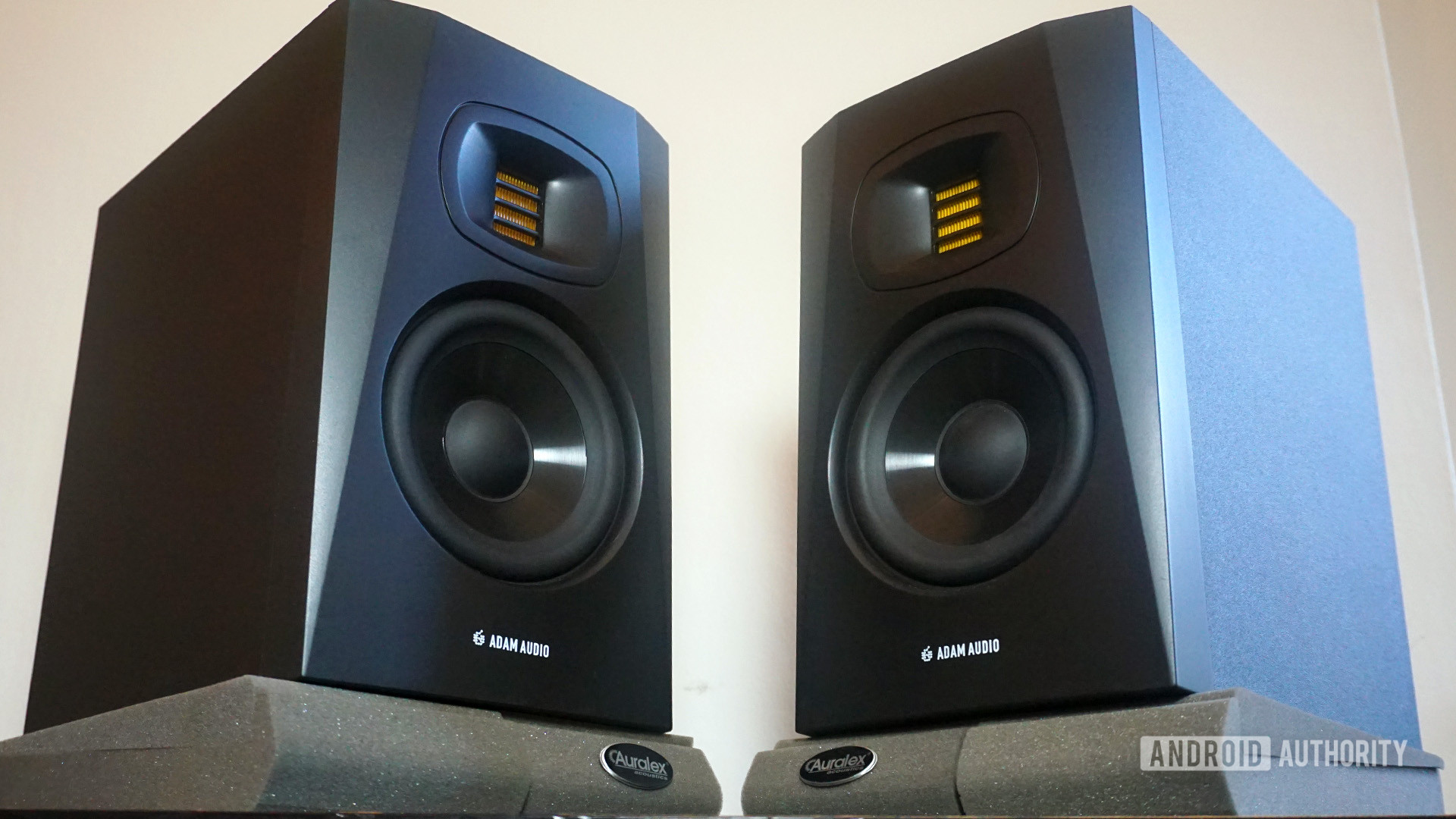
Take the JBL Flip 6, for example. For only $129 on release, users gain access to Bluetooth 5.1 with a range of up to 40 feet and up to 12 hours of battery life on a single charge. The speakers also host USB-C charging and an IP67 resistance rating to protect them from brief plunges into salt water and dust. The sound profile stays true to previous JBL Flip series speakers, emphasizing bass response over clarity in the mid-treble frequency bands. While that is great for thumping outdoor parties, these speakers will not appease audiophiles. Musical nuances are difficult to distinguish due to the emphasized bass profile, and the lack of any high-res alternative Bluetooth codec to the standard SBC is a miss. Like its predecessor, the Flip 6 has also ditched the AUX input.
For speakers with much more audio clarity, the ELAC Debut B5.2 still holds itself proudly as an excellent set of bookshelf speakers. In addition to a good-quality amplifier, the B5.2 will set you back roughly $249 as of writing. For the price, users gain access to top-range features, including 5-1/4-inch aramid fiber bass woofers and 1-inch cloth dome tweeters. The frequency range is also super-wide, covering 46Hz-35kHz. While they work best paired with stereo amplifiers and vinyl players, users could invest in a Bluetooth DAC to connect wirelessly from a smartphone.
Studio monitors require a dedicated space where Bluetooth and smart-home speakers do not.
Finally, the Google Nest Audio is a great all-around smart speaker. For only $99 at launch, users receive a compact speaker system that connects via Bluetooth or Wi-Fi, delivering high-quality audio capable of reproducing FLAC, WAV, and more. It is worth noting that in terms of Bluetooth, the Google Nest Audio only supports the SBC and AAC Bluetooth codecs. However, Chromecast means it is even easier to stream media from your smartphone, tablet, or laptop. The speaker hosts a 75mm mid-woofer and 19mm tweeter that delivers clear audio. The size limitation means you will not receive a particularly prominent bass response. However, this enables the Google Nest Audio to deliver clear-sounding mid and treble frequencies. The speaker also pairs with other Google Nest and Google Home devices to create a multi-room and stereo speaker system, which is pretty neat.
The above speaker systems could be considered much more user-friendly than studio monitors. Bluetooth speakers are easy to connect, bookshelf speakers deliver excellent-sounding audio, and smart speakers make our lives easier. By comparison, studio monitors feel a lot more specialist. Most of us enjoy the sound of accentuated bass frequencies and built-in EQ settings, as opposed to the flat frequency response of monitor speakers. This is especially true if you mainly listen to contemporary genres of music with less dynamic nuances and timbre.
If you are looking to sing along to your favorite songs, a Bluetooth, bookshelf, or smart speaker is probably a better purchase.
To round off, studio monitors benefit audiophiles and musicians the most. There are several ways to connect them up, but it generally takes a few more steps than connecting to simpler speaker systems. Studio monitors can also be expensive, especially if you want the best-quality setup.
However, if your budget is hard-pressed, the KRK Rokit 7 G4 are popular among home studio artists. They benefit from a 7-inch bass woofer and 1-inch tweeter capable of reproducing a wide frequency range between 42Hz – 40kHz. These speakers also host a DSP-driven graphic equalizer with 25 settings to help condition and tune your speakers to your acoustic environment. The low-end is also pleasing to the ear and accurate, providing clear bass while avoiding noticeable distortion.
